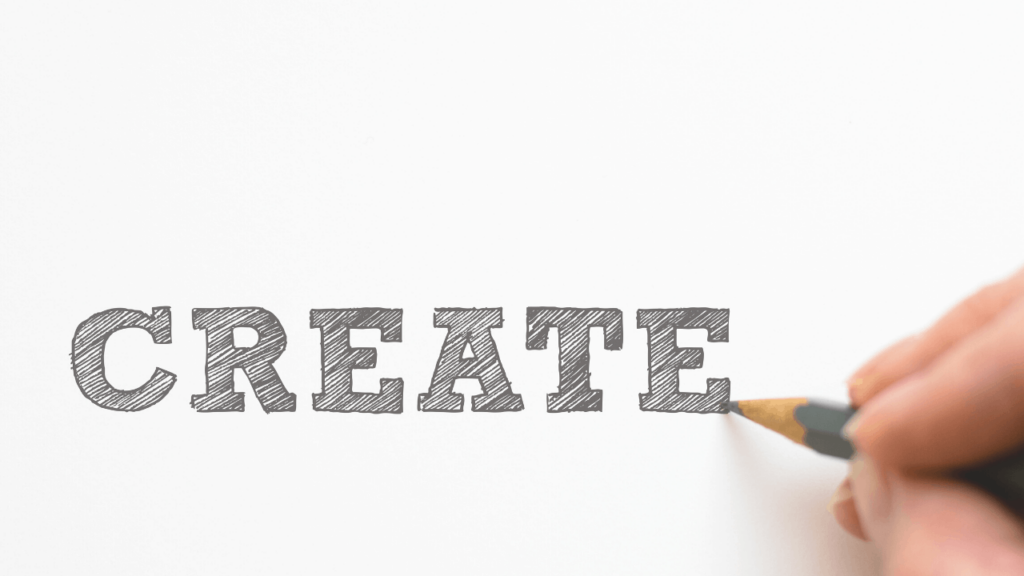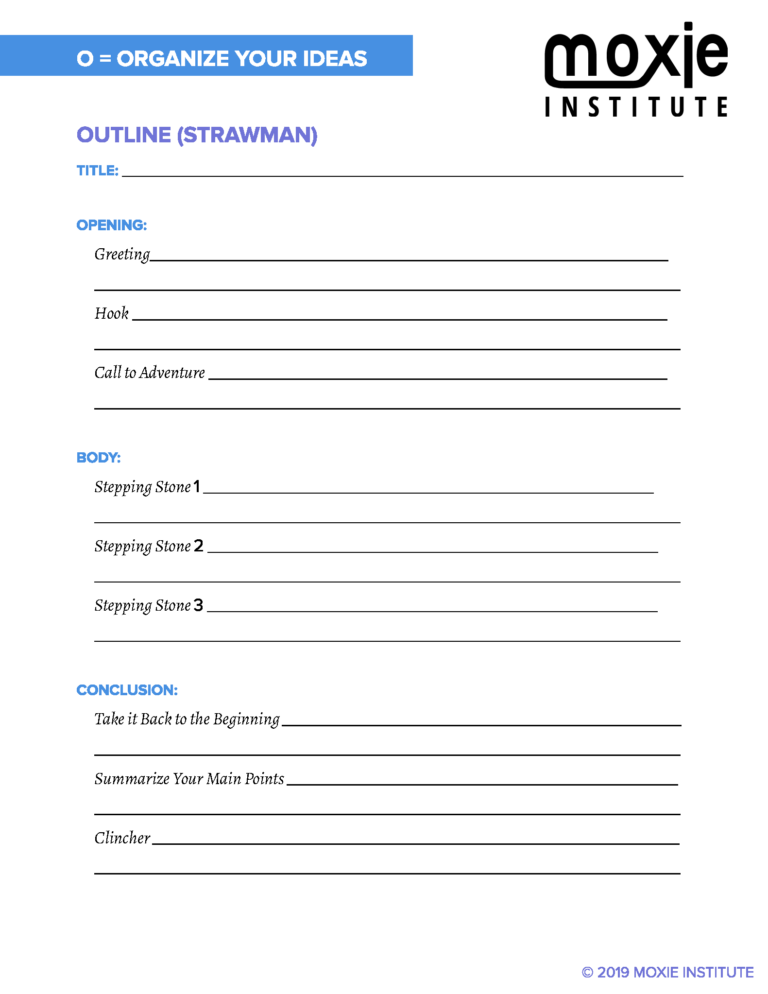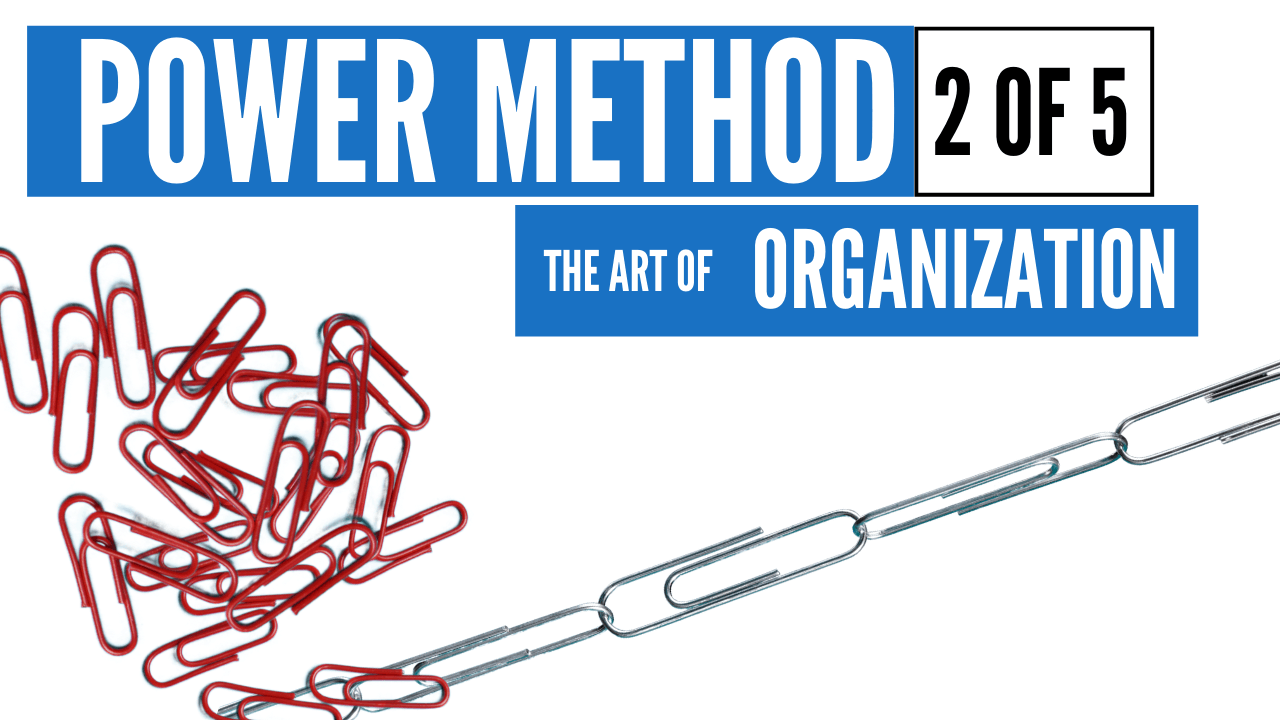Welcome back to our second lesson in our series on how to write a speech. In this 5 part guide, we’ll be covering the Moxie Institute’s POWER method for writing a powerful and persuasive speech.
In this article, we’ll be focusing on how to outline your presentation and how to write the opening to a speech—arguably one of the most important and valuable elements of writing your speech.
If you’ve lost them in the opening, you’re not likely to win them over in the middle or at the end!
In our last blog, we covered the “P” for Purpose and highlighted how to conduct an audience analysis. If you missed or want to review the article on “Purpose” CLICK HERE
Let’s get to it!

Table of Contents
ToggleHOW TO WRITE A SPEECH OUTLINE
Every speech has an opening, a body, and a conclusion—obviously—but we want to challenge you to think about each of those in a very different way.
While you want your speech to flow as if it’s conversational, you also want it to have a solid foundation, which we call an outline.
- The opening to your speech isn’t a worthless “Hello, my name is…”, it’s your chance to excite, shock, amuse, anything to capture your audiences attention and encourage them to listen.
We offer more detailed tips below.
- The body isn’t just evidence for your points. It should be full of stories, analogies, interesting insights woven together with data to raise your credibility and connection with the audience.
Write out your evidence/data/facts and then write down any interesting story or insight you can attach to it.
- The conclusion isn’t just a bland summary either. It’s the pay off, it’s the KO, it’s where everything comes together to ensure your audience feels motivated to take whatever action you want from them.
It’s important you know that even seasoned writers stare at that first blank page thinking “Ok, how will I pull it off this time?”
The answer, always, is through crafting and revision. Crafting and revision. Over and over. Just how dull cube of marble is carved and chipped at repeatedly before the final polish reveals a beautiful sculpture.
Your outline is your first hack. Taking out lumps and chunks to get you a vague, ugly looking idea of your final vision.
It’s supposed to be rough.
So don’t worry, your speech and your speech writing skills will become more polished with each revision and rehearsal.
It’s normal to not be happy with it even after your first or third drafts. It will get there!
Of course, some guidance always helps.
Use the below worksheet to help you outline your next presentation or speech.

Because one of our most popular services is our expert speech writing, we’ve got a host of award-winning speech writers tips and techniques to share with you about how to start a speech.
Here’s a sample of some of the methods they’ve used to craft applause-worthy TEDx Talks and corporate presentations for Fortune 500 companies, CEOs, industry leaders, and other top professionals that we’ve partnered with.
THE IMPORTANCE OF STARTING A SPEECH THE RIGHT WAY
When figuring out how to start a presentation, the organization of your speech is a major component.
You need to keep an audience engaged and following your story. The last thing you want is for your audience to get lost on the journey that you’re leading them on.
Your opening sets the tone for your entire presentation. Your audience makes a value judgment about you in the first 7 seconds. That is when you introduce your message and tell the audience why they need to hear it.
So how should you start your speech to capture the attention of your audience and gain maximum impact?
The first step to a powerful opening should be to give your audience something unexpected and engaging.
Think about challenging their conventional wisdom.
Our favorite way for hooking an audience? PUNCH them:

HOW TO HOOK YOUR AUDIENCE
One of the tools that the Moxie Institute utilizes in all of our presentation openings is the PUNCH method.
The acronym PUNCH stands for the following ways that you can hook your audience into what you’re saying with ease.
- P = Personal
Illustrate a story to make the presentation more personal. Tell a client, customer, or your story, show, don’t tell. This method gets the audience visualizing and taking a journey with you through story. - U = Unexpected
Reveal something unexpected to your audience – a shocking quote, a question with a surprising answer, a statistic that goes against conventional thought.
Something to make them wonder if there are other areas that they’re not “in the know” about as well. This establishes you as an expert and intrigues while enticing the audience’s appetite for more surprising facts. - N = Novel
Show or tell something novel, something that’s never been seen or heard before - C = Challenging
Challenge conventional wisdom or assumptions about the topic – ask a hypothetical that makes them think. - H = Humorous
Humor is a great way to engage your audience, laughter is contagious and it connects you to the audience. - BONUS:
Check out Fia’s quick tips on how to make a great first impression.
THAT’S JUST THE BEGINNING
This article about how to start a speech covers a couple of lessons out of one of our core Chapters the “O” in our POWER acronym, Organize. The full course includes information on:
- How To Write A Title
- How To Write An Opening
- Call To Adventure
- The Body
- The Closing
- How To Outline
Now you’ve got some tools of the trade, but may still be itching to learn more techniques to hone your skills.
Our speech writing coaching and training covers everything in more detail with even more powerful insights and expert feedback to take your writing to the next level.
We also offer an online course to learn in your own time!
WHAT NEXT?
“W” – Write For The Ear Not The Eye
Stay tuned for our next blog in this 5 part series which will cover the “W” of the Power method, Writing Tips. In this blog, we’ll be shelling out best practices for writing your most standing ovation worthy speech yet! We’ll dive into how to write for the ear and not the eye in order to captivate and enthrall an audience.
TAKE THE FIRST STEP TO MASTER POWERFUL NEW SKILLS
Schedule an easy 30-minute call using our using our calendar. We’re here to help!









